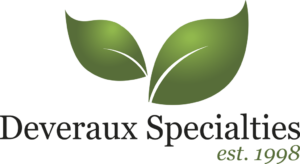From Clinic Shelves to Bathroom Shelves
If you’ve been watching ingredient chatter over the past two years, you’ve seen polynucleotides—especially PDRN—move from clinic jargon to consumer headlines. The K-beauty ecosystem played a decisive role in that shift. As Korean aesthetics clinics popularized minimally invasive “pre-juvenation” procedures, the category’s language—repair, collagen support, texture smoothing—translated neatly into take-home serums and masks. That bridge from procedure room to retail shelf accelerated when trade and consumer media latched onto a simple hook: “DNA” as a proxy for renewal. The result is a spike in launches referencing polynucleotides, with South Korea leading and Western markets fast following.
But a trend is not a strategy. For a formulator, the real question isn’t “Is PDRN hot?” It’s “What problem does this class of actives solve better than my current toolkit—and how do I adopt it without operational headaches?” Answering that requires separating signal from noise: understanding what polynucleotides do biologically, why early “salmon DNA” stories now create friction, and where non-animal biotechnology delivers the same functional core with cleaner scale, consistency, and claims.
What’s Hard About Riding This Trend
The first challenge is source risk. Traditional PDRN narratives often center on fish-derived material. Reviews of animal-origin cosmetic ingredients (so-called “zooceuticals”) outline hygienic-sanitary, ethical, and ecological concerns, as well as the perception issues that complicate retailer acceptance and brand positioning. Even when quality is tightly controlled, the animal origin can place unnecessary constraints on launch velocity, global market access, and long-term brand equity.
The second challenge is consistency and scale. Animal extraction can introduce lot-to-lot variability, and yields may not track cleanly with demand. In a world where claim defensibility, traceability, and batch reproducibility are under greater scrutiny, that variability becomes a practical barrier. Precision bioprocesses—fermentation and recombinant expression—were designed to solve this, providing high-purity, sequence-controlled materials and eliminating the need for animal-derived inputs. For a class like polynucleotides, where chain length distribution and purity matter, process control isn’t an optional feature; it is essential for reliable efficacy and dossier confidence.
The third challenge is evidence alignment. Your claim spine must connect in vitro signals—fibroblast proliferation, protein synthesis, collagen gene expression—to outcomes consumers recognize, such as smoother texture and visible wrinkle-area reduction. Recent peer-reviewed work consolidates clinical and mechanistic data for polynucleotides in aesthetic contexts and, critically, acknowledges the viability of non-animal-derived sources. Complementary studies using yeast-derived nucleotides demonstrate enhanced human dermal fibroblast migration and proliferation, with clinical benefits in barrier-compromised skin—strong support that non-animal nucleotide sources can drive the same repair-oriented pathways associated with PDRN.
Kaligen™ Turns PDRN Hype Into Scalable, Retailer-Ready Efficacy
Kaligen is a bio- and plant-origin nucleobiotic designed to deliver the renewal and repair story associated with polynucleotides—without the liabilities of animal sourcing. It’s produced via a controlled BioNucleMax fermentation that tunes pH, temperature, oxygenation, and trace elements on plant-derived substrates (including chicory oligosaccharides) to concentrate a highly bioavailable pattern of nucleic acids and nucleotides. In other words, Kaligen preserves the mechanistic core formulators want—support for fibroblast activity, protein synthesis, and collagen-related pathways—while aligning with modern expectations for vegan/biotech positioning, cleaner claims, and scalable quality systems.
From a day-to-day lab perspective, Kaligen is built for ease. The powder is water-soluble, additive-lean, and typically used at low inclusion levels (~0.10–0.25%) across a broad pH window (~4.5–8.0). It prefers cold-process addition after pre-solubilization in a small water aliquot, which makes it straightforward to drop into late-stage pilot batches without disrupting preservation systems or viscosity targets. Because its bioprocess is engineered for consistency, Kaligen supports predictable lot-to-lot behavior, which helps your in-house assays line up with dossier claims and reduces friction during stability, scale-up, and regulatory review.
Kaligen also addresses the commercial realities behind the PDRN boom. As K-beauty awareness pushes polynucleotide claims into global retail, teams are being asked to deliver performance with traceability and repeatability. Kaligen’s non-animal fermentation route provides a clear sourcing narrative for retailer compliance and a practical path to global scale. The result is a defensible, future-ready ingredient choice: you retain the performance class consumers now recognize, while removing the origin and variability issues that slow launches or force mid-cycle reformulations.
Finally, Kaligen integrates cleanly across formats where polynucleotide stories resonate. In daily renewal serums, a 0.15–0.20% level in a humectant-rich water phase offers a fast read on feel and early skin response. In overnight creams, pairing Kaligen with barrier-supportive emollients aligns with visible texture and wrinkle-area endpoints. And in recovery/anti-fatigue masks, Kaligen provides a repair-forward signal without stacking a long list of sensitizing co-actives—useful when you’re building for sensitive or post-procedure-adjacent audiences. In each case, the handling is the same: pre-solubilize, cold-process in, finish pH and viscosity, and proceed to CTS with a coherent, biotech-aligned claim spine.
Validating the Promise: In Vitro to In Vivo Consistency
Mechanistically, the value proposition is straightforward. Polynucleotides and nucleotide complexes can support fibroblast activity, protein synthesis, and collagen expression—pathways that align with the visible endpoints we care about in anti-aging and recovery: smoother texture, improved firmness, and reduced wrinkle area. Systematic reviews in aesthetic medicine summarize these effects and note that efficacy is not contingent on animal origin. That point is crucial: it gives you the freedom to make sourcing choices based on quality, scalability, and brand fit, not tradition.
Independent lines of evidence reinforce the feasibility of non-animal inputs. Yeast-derived nucleotides have been shown to enhance fibroblast migration and proliferation, with accompanying clinical benefits in atopic-dermatitis cohorts. While the indication differs from classic anti-aging, the underlying biology—supporting cell renewal and repair—translates directly to cosmetic contexts that target barrier function and texture improvement. On the manufacturing side, peer-reviewed work on precision fermentation frames it as a direct replacement for animal sourcing, offering high-purity, consistent actives suitable for cosmetics. Meanwhile, trade reporting has documented the commercial introduction of recombinant, animal-free PDRN, signaling that the category is maturing into a biotech standard.
Controlled in vitro and short-horizon in vivo tests on Kaligen provide a clear read on performance. In vitro, human dermal fibroblasts exposed to the ingredient show robust viability at 24 hours (≈+158% by MTT), increases in total protein content (≈+36% at 24 h; ≈+69% at 48 h by Bradford), accelerated closure in scratch assays, and a ≈1.3× rise in COL1A1 by RT-PCR. In vivo, a single-blind, twice-daily, 4-week study measured wrinkle-area change via 3D imaging, reporting improvement versus placebo with the strongest signals in frown and forehead regions. For formulation decision-making, these are directional cosmetic outcomes with a clean mechanistic rationale—sufficient to justify iteration in serums, night creams, and recovery formats while you build brand-specific clinicals.
Where This Is Going: From Buzz to Benchmarks
What began in K-beauty as clinic-to-consumer diffusion is evolving into a durable biotech-first ingredient class. For R&D, non-animal nucleobiotics provide a way to retain the functional promise of polynucleotides while addressing the pain points that slow commercialization: variable supply, origin-related perception, and dossier friction. That alignment simplifies conversations with regulatory teams and retail partners and positions your brand to scale globally without retrofitting the sourcing narrative mid-launch.
Operationally, the advantages compound over time. Fermentation and recombinant platforms enable traceability, spec control, and repeatability in ways that are difficult to achieve with animal extraction. As the category matures, we should expect more spec-driven differentiation—tuning nucleic-acid distributions and purity profiles to target specific endpoints—rather than generic “DNA” storytelling. Teams that adopt this mindset now will spend less time firefighting batch variability and more time optimizing textures, sensorials, and long-horizon claims.
Make the Hype Work for You
The PDRN boom isn’t accidental. K-beauty translated a clinic-validated concept into clear, consumer-friendly language and distribution. The underlying science—supporting fibroblast activity, protein synthesis, and collagen expression—makes the category more than a marketing story. What has changed is how we manufacture these benefits: you no longer need animal sourcing to reach the biological effects that matter. Non-animal, fermentation-driven nucleobiotics give formulators the same functional core with better consistency, clearer claims, and a stronger path to scale.
🔴 Join the Webinar: New Biotech Frontier—Multilevel Biorestructuring in Post-Procedure Skincare & Advanced Anti-Aging
🗓️ When: Tuesday, November 11, 2025 at 12:00 PM EST / 9:00 AM PST
📍Attend Live or Watch On-Demand: On-demand viewing opens ~1 hour after the live session for all registrants.
💡 What you’ll learn:
🔬 PDRN-based innovation: Clean biofermentation and circular-economy processes that yield high-purity nucleic acids with strong skin affinity.
🧬 Kalinat PDRN Technology: How sequence-controlled PDRN targets immediate lifting, wrinkle reduction, and elasticity in topical formats.
🧪 Kaligen—Next-Gen PDRN approach: Plant-based/bio-sourced nucleic acids and nucleotides that support cellular renewal and long-term skin health.
👇 Reserve a spot or get the recording 👇
Register here to attend live or access on-demand after the broadcast.
Looking to convert K-beauty buzz into defensible, lab-ready efficacy?
Request the technical dossier, formulation guidance, and sampling support from your Deveraux Specialties account manager or submit a request via our website. We’ll help you translate polynucleotide-class benefits into a reproducible, non-animal, biotech-ready formula that meets your brand and regulatory standards—fast.
KaliGen
Resources:
- Cristiano, L., & Guagni, M. (2022). Zooceuticals and cosmetic ingredients derived from animals. Cosmetics, 9(1), 13. https://www.mdpi.com/2079-9284/9/1/13
- Lee, K. W. A., Lam, A. K. C., Ng, L. P., Wong, K. Y., Liew, H. M., & Luk, K. S. L. (2024). Polynucleotides in aesthetic medicine: A review of current practices and perceived effectiveness. International Journal of Molecular Sciences, 25(15), 8224. https://www.mdpi.com/1422-0067/25/15/8224 (PubMed: https://pubmed.ncbi.nlm.nih.gov/39125793/)
- Segarra, S., Bošnjak, I., Mioč, I., Čurčija, B., Csik, V.-A., Krešić, S., Romero-Rueda, J., Rodríguez, A., & Martínez-Puig, D. (2024). Yeast-derived nucleotides enhance fibroblast migration and proliferation and provide clinical benefits in atopic dermatitis. International Journal of Molecular Sciences, 25(5), 2890. https://www.mdpi.com/1422-0067/25/5/2890
- Silva, S., Bautista-Hernández, I., Gomez-García, R., Costa, E. M., & Machado, M. (2025). Precision fermentation as a tool for sustainable cosmetic ingredient production. Applied Sciences, 15(17), 9246. https://www.mdpi.com/2076-3417/15/17/9246
- RJMPDRN REC: The world’s first recombinant salmon PDRN for anti-aging and regeneration. (2025, October 15). Cosmetics Business. https://cosmeticsbusiness.com/rjmpdrn-rec-the-world-s-first-recombinant-salmon-pdrn
Citation Note:
To make this article useful to formulation and regulatory teams, only peer-reviewed, open-access sources and trade reports were cited. MDPI journals (Applied Sciences, International Journal of Molecular Sciences, Cosmetics) provide full-text access and detailed methods relevant to claim substantiation (e.g., fibroblast assays, gene-expression analyses). The trade source documents commercial adoption of recombinant, animal-free PDRN, demonstrating that the technology has moved from theory to practice. Supplier technical data informing use levels, pH range, handling, and directional efficacy are available directly from Deveraux Specialties upon request.









